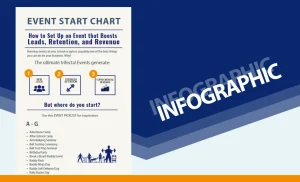Insights & Resources to Help You Grow
Stay ahead with expert tips, client success stories, and industry updates tailored for membership-based businesses.
Most Recent Posts

How to Build Stronger Memberships in 2026
A Strategy Guide for Dojos, Studios, and Member-Based Businesses Are you trying to figure out how to build stronger memberships

Interview with the Experts: Featuring Michael Brandt
Behind the Scenes of Member Manager with Product Owner, Michael Brandt If you’ve ever used Member Manager, you’ve already interacted

2026 Membership-Based Industry Trends You Should Know
The membership-based business industry isn’t slowing down (and neither are the opportunities!). The 2026 Fitness Industry Report by Mariana Tek shows just how
Event Registration

9 Fall Events & Activities to Boost Enrollment & Retention in Your Martial Arts School
Are you looking for ways to build connection in your martial arts school? To bring new students through your door?

Event Start Chart: How to Set Up an Event that Boosts Leads, Retention, and Revenue [Infographic]
Are you looking for ways to fill your classrooms with new, eager-to-learn white belts? To re-ignite engagement with your current

[Webinar] Special Event Ideas to Ignite Member Engagement
You’ve heard it before: The more engaged members are, the more loyal they become. The more loyal members are, the
Managed Billing

9 Fall Events & Activities to Boost Enrollment & Retention in Your Martial Arts School
Are you looking for ways to build connection in your martial arts school? To bring

Event Start Chart: How to Set Up an Event that Boosts Leads, Retention, and Revenue [Infographic]
Are you looking for ways to fill your classrooms with new, eager-to-learn white belts? To

[Webinar] Special Event Ideas to Ignite Member Engagement
You’ve heard it before: The more engaged members are, the more loyal they become. The
Membership Software

How to Build Stronger Memberships in 2026
A Strategy Guide for Dojos, Studios, and Member-Based Businesses Are you trying to figure out

Interview with the Experts: Featuring Michael Brandt
Behind the Scenes of Member Manager with Product Owner, Michael Brandt If you’ve ever used

2026 Membership-Based Industry Trends You Should Know
The membership-based business industry isn’t slowing down (and neither are the opportunities!). The 2026 Fitness Industry Report by

Interview with the Experts: Featuring Michael Brandt
Behind the Scenes of Member Manager with Product Owner, Michael Brandt If you’ve ever

2026 Membership-Based Industry Trends You Should Know
The membership-based business industry isn’t slowing down (and neither are the opportunities!). The 2026 Fitness Industry Report

What the Recent AWS Outage Means for Your Business and How You Can Stay Prepared
Even the all-mighty cloud has to come back down to earth sometime. On October
See Our Latest Posts

How to Build Stronger Memberships in 2026
A Strategy Guide for Dojos, Studios, and Member-Based Businesses Are you trying to figure out how to build stronger memberships

Interview with the Experts: Featuring Michael Brandt
Behind the Scenes of Member Manager with Product Owner, Michael Brandt If you’ve ever used Member Manager, you’ve already interacted

2026 Membership-Based Industry Trends You Should Know
The membership-based business industry isn’t slowing down (and neither are the opportunities!). The 2026 Fitness Industry Report by Mariana Tek shows just how
